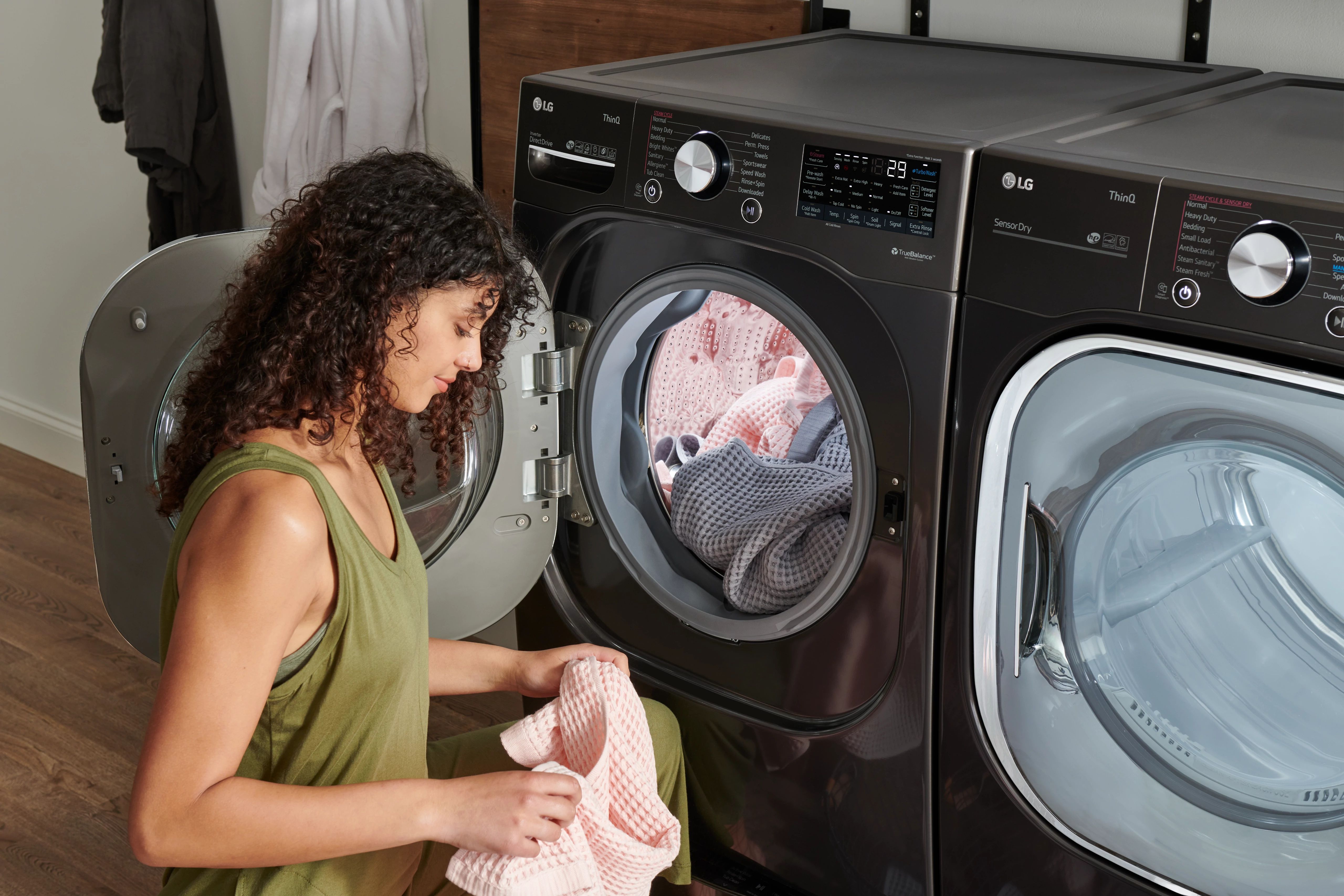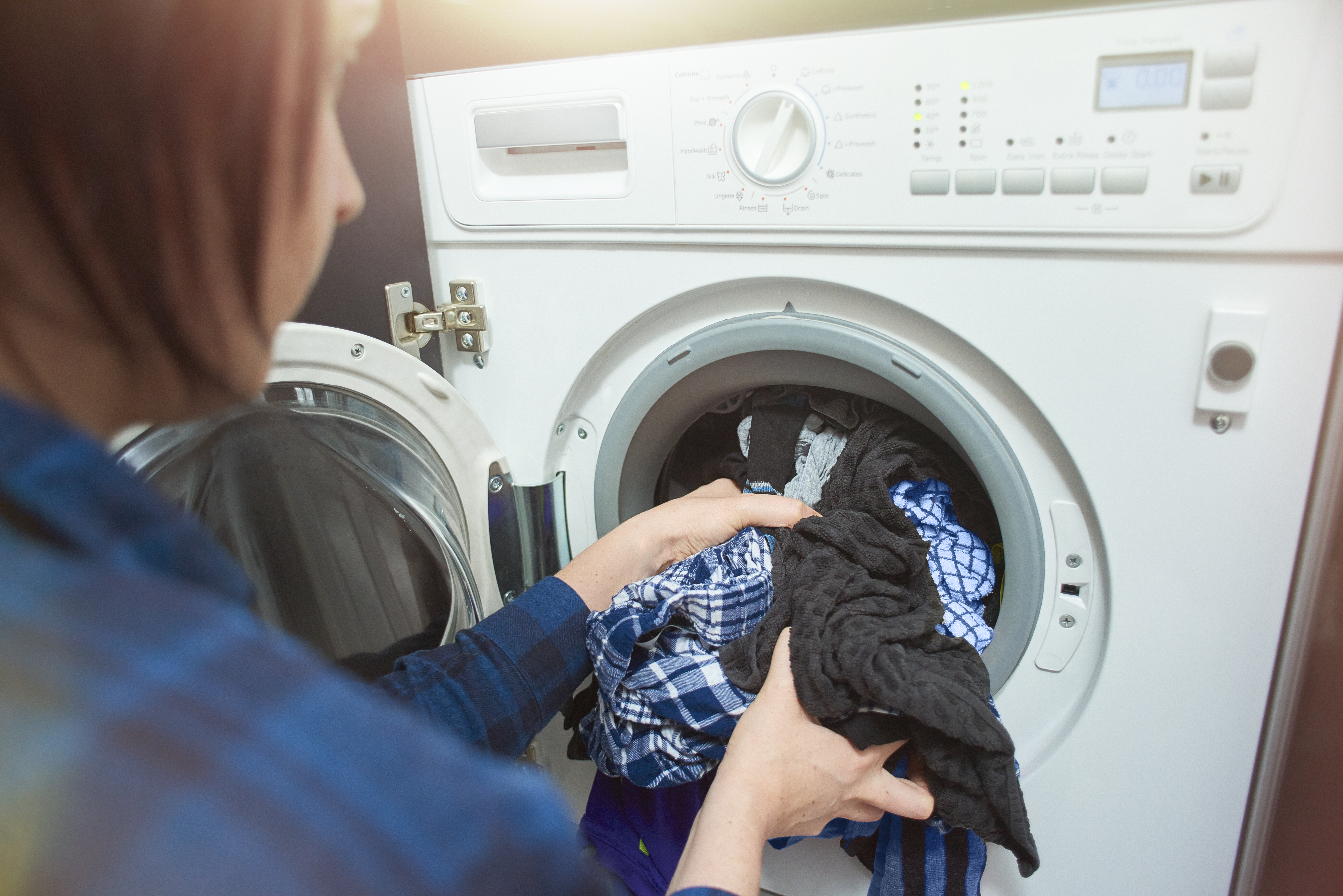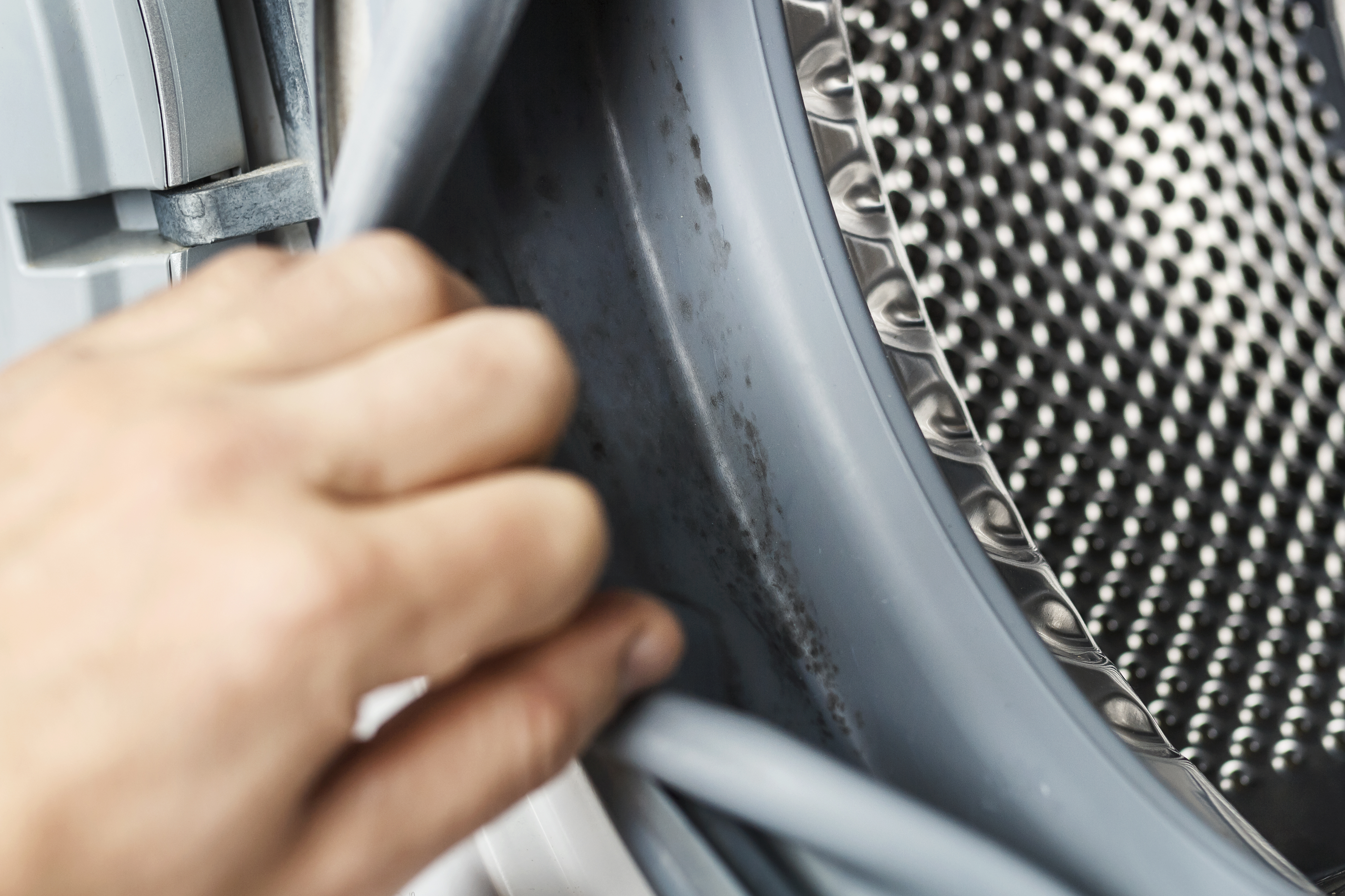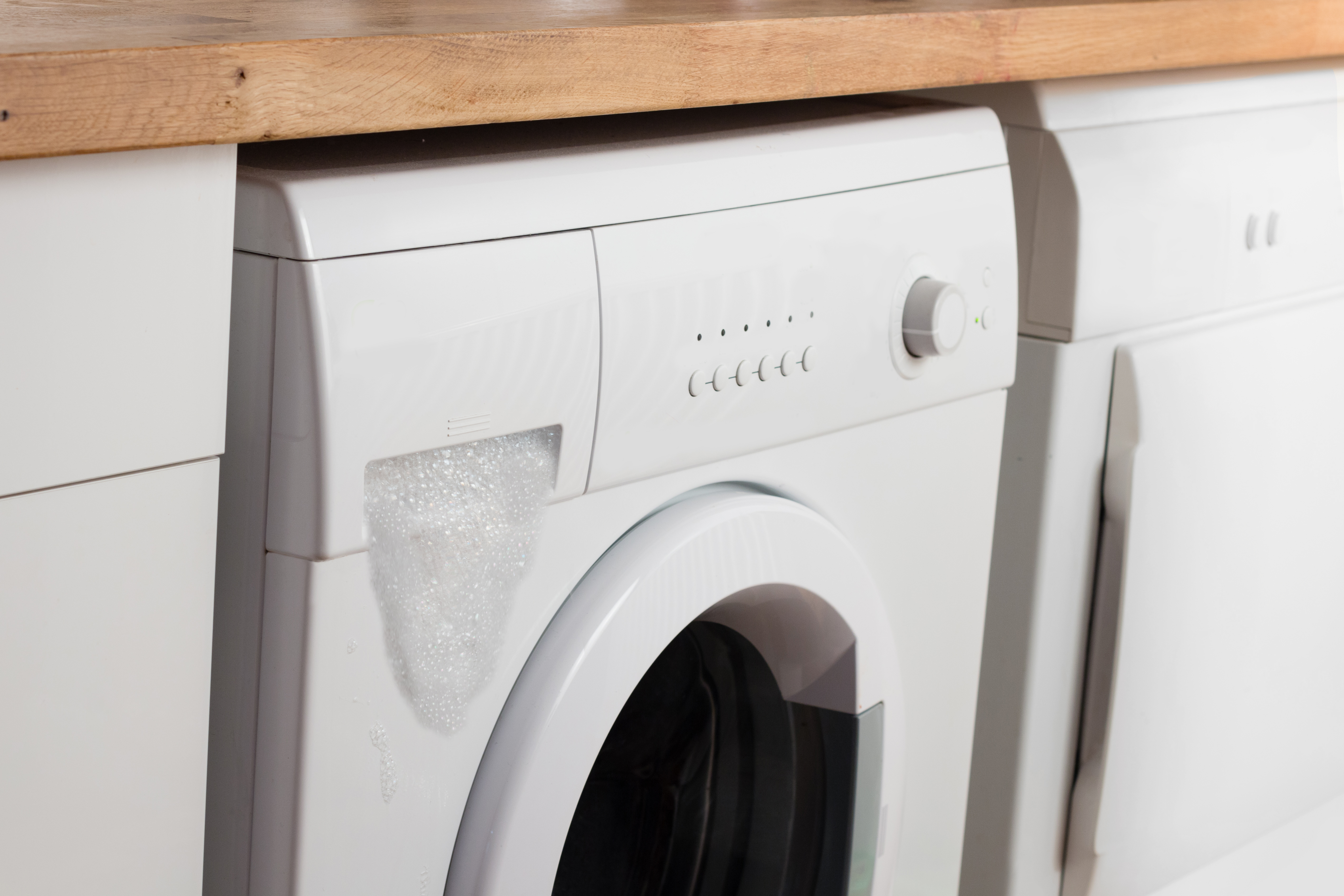The introduction of front load washers revolutionized the appliance market, providing shoppers with advanced laundry units that operate quietly, are more water- and energy-efficient, and can handle larger loads. However, these laundry superheroes quickly encountered their very own kryptonite: mold and mildew. Specifically, buildup around the gaskets, pump, and detergent dispenser, causing unsanitary wash conditions along with unsettling odors.
Now — thanks to tips and tricks users have adopted over the course of the first generation of front load washers — this once common problem is less of an issue for users today. Still, many first- and long-time front load washer users are often unaware they can prevent mold buildup altogether with just a little know-how. In this informational article, we’ll give you five great tips to keep your front load washer free of mildew and odors, along with recommended brand features that make the maintenance even easier.

Causes of Mold & Mildew on Front Load Washers
A large part of the problem comes down to mechanics. On traditional washers with a lid, there’s no need for an airtight seal since wash water is contained in a deep tub. Rather than creating a vortex of agitation like top load washers do, front load washers use a drum that tumbles on its side, which requires a tight barrier to keep water from spilling out.
While necessary, that same seal also creates ideal environments for bacteria and mold to grow. The gasket around the washer door is the most susceptible; however, users have also commented on mildew buildup inside the detergent dispenser. Of course, this can all be prevented with some light upkeeping. Here are five ways to keep mold, bacteria, and mildew from forming.
Tip #1: Open Door Policy
Sometimes, the solution to a problem is simple. In this case, one of the most effective ways to prevent mold and mildew growth on a front load washer is by keeping the door open after a wash. It’s logical to think hot washes kill bacteria on the spot, but the reality is, any kind of residual moisture provides an opportunity for spores to grow. Even worse, when the door is closed after a wash (especially hot washes), the sealed environment creates humid conditions where mold and mildew thrive.
Keeping the door ajar is a low-maintenance solution to drying these problem areas and reducing the chances of any kind of bacterial growth.
Tip #2: Transfer Clothes ASAP
Prolonged exposure to moisture is a dream for bacteria, but it’s enemy number one for a front load washer. Make it a habit to remove wet clothes from the washer as soon as a load is done. Failure to do so no is not only bad for your washer, but once odors from mildew impart onto fabrics, they may require several washes before the scent is completely removed. In worst cases, reversing the smell is virtually impossible, rendering a garment unusable.
A washer chime is a convenient audio cue to when a wash is done, while smart front load washers send an alert to your personal device the instant a wash finishes.

Tip #3: Load Once and Only Once
When it comes to laundry day, efficiency is everything, so skipping the hamper and tossing dirty clothes directly into the washer as you go seems like a naturally smart hack. The problem is, there’s no real telling how long soiled laundry has been sitting idle in the washer until you’ve reached a full load. The longer dirty clothes lingers in the washer, the greater the exposure to bacteria, mold, and spores, and this can be worsened if your front load washer is not properly maintained (i.e., a dry drum, free of mold buildup).
Tip # 4: Practice Good Washer Hygiene
Good front load washer practice begins with wiping down vulnerable areas that come into contact with moisture most often. Frequency will ultimately come down to how often your household does laundry, but in general:
- Give the gasket a wipe every 7-10 days.
- Rinse, wash, and dry the detergent dispenser at least once every month.
When performing this routine, pay close attention to small crevices, nooks, folds, and corners. These areas are the darkest, most humid, and are easily forgotten, providing optimum harboring conditions for bacteria and mold.

Aside manual upkeep, many front load washing machines also feature a Clean Cycle. Running this load regularly can help cut down on the work you need to do in between each cleaning, and can also help keep your unit running in prime conditions. Generally, self-cleaning washers notify users when it’s time to run the cleaning cycle, but good practice dictates a session at least once every two weeks, though this will also depend on the volume of washes your household performs.
And don’t forget to explore specialty products available on the market. Products such as Whirlpool’s Affresh add a boost of cleaning performance and sanitization to the Clean Cycle, further protecting your washer from hard-to-remove mildew.
Tip #5: Less is More
Front load washers are selective machines. That’s not to say they’re hard to use; they just require a little more care than top load counterparts. That starts with the detergent, which should always be high-efficiency (HE) grade. HE detergent is formulated to create fewer suds, helping clothes rinse better and eliminating soap residue in the washer. Believe it or not, some bacteria thrive on detergent, so it’s imperative to use the right detergent to prevent any lingering film from becoming a feeding ground.
Another benefit of HE laundry detergent is you can use less. In fact, it’s recommended to use only the amount labeled on the detergent dispenser. Luckily, select front load models come with an automatic detergent dispenser (we’re fans of Whirlpool’s Load and Go) that serve dual purpose:
- An automatic detergent dispenser lets you skip a step in the wash process by storing enough soap for multiple loads (sometimes up to 40 or more, depending on brand and model).
- By using an automatic detergent dispenser, you can be sure you’re using the exact amount detergent, which protects your washer and is also economic.

Keeping a Front Load Washer Clean: Recommended Products
Since the first generation of front load washers, manufacturers have come up with new technologies to combat mold, mildew, and bacteria growth associated with these appliances. Our two favorite brands — GE and LG — provide some of the best features that defend against bacteria and mold growth on front load washers.
GE’s UltraFresh Vent System with OdorBlock
For the best mold and mildew protection on the market, shop GE front load washers using UltraFresh Vent System with OdorBlock. This industry exclusive guards the washer against odor and mold three ways:
✓ DRAIN: The gasket has been specially designed with a smoother surface, larger drain holes, and a wider channel, all which improve moisture drainage.
✓ DRY: After every load, the UltraFresh Ventilation System circulates air throughout the interior while the drum spins in 15 minutes cycles until every surface on the inside is dry.
✓ DEFEND: Microban technology integrated into the gasket, detergent dispenser, and pump creates a barrier that prevents bacteria from forming.
- Also recommended: Samsung front load washers with CleanGuard Technology. While this washer feature from Samsung doesn’t come with ventilation, the antimicrobial lining does help keep bacteria and odors at bay in a way very similar to GE’s UltraFresh Vent System.
LG’s Proactive Customer Care
Having a smart washer means receiving notifications of problems as they happen, but the intelligent monitoring can also inform users how to improve their user experience.
For instance, there’s no need to track when the last time you ran the self-clean cycle. Instead, the smart technology automatically determines when the washer is due for a cleaning. On select LG front load washers with WiFi connectivity, users can even run the cycle remotely all with a simple command from a smart device.
Having artificial intelligence is also practical for monitoring user habits, such as using too much detergent. When too many suds are produced, the washer can send a notification to use less detergent. On top of reducing residual suds and soap left behind after a wash, tracking these habits beforehand is another way to keep your washer from needing costly repairs.
Shop Front Load Washers at Grand Appliance
Our final tip for you? Shop Grand Appliance and TV for the best supply of reliable front load washers and laundry appliances in your area. From top load and front load washers, to pedestal washers, dryers, and drying cabinets, we have products to conquer all your laundering needs from leading brands and at a low-price guarantee.
We’re open at 25 appliance showrooms across the upper Midwest in Wisconsin, Indiana, Illinois, and Iowa, including locations in Chicago, Milwaukee, Indianapolis, and Green Bay. Or browse entire online inventory, including in-stock items and clearance appliances online from the comfort of your home. Shop and experience the Grand difference today!
